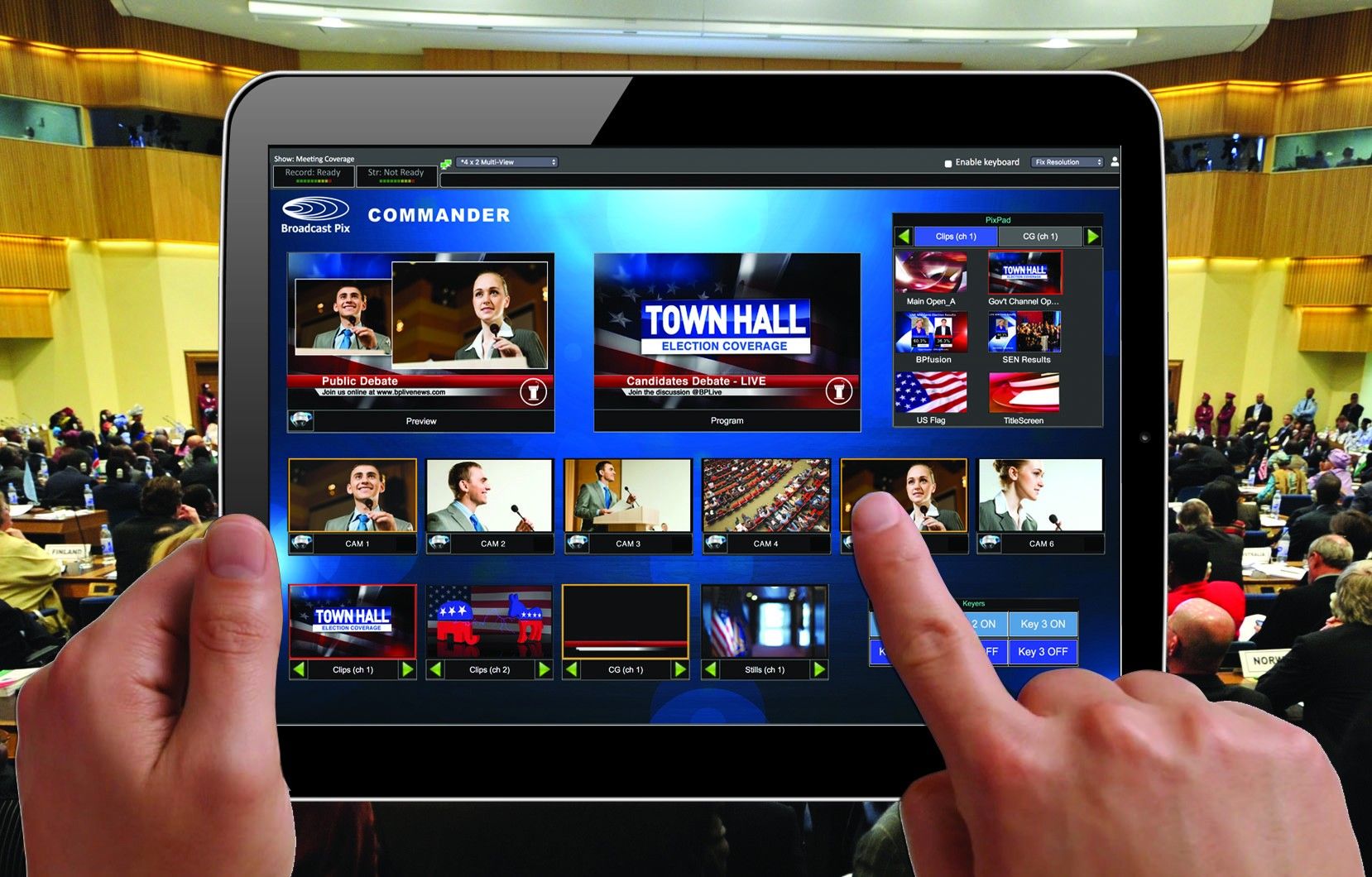Video SDK: remote control software for Broadcast Pix, USA

Broadcast Pix, based out of Boston, develops and markets integrated production switchers combined with realtime 3D graphics, green screen, virtual sets and a cloud-based media asset management system.
The product’s newest capability is a web interface that allows remote control of the video switcher with an ultra-low latency multiview. We had a great conversation with Ben Taylor, CTO at Broadcast Pix.
Improving workflows
The company was started in 2003 with the idea of creating an integrated solution that would replace several devices that often required dedicated and trained people to run them.
The goal of the company was to use the power of the computer to simplify the production and to make it easier for one person to produce a really great live video event from one workstation. The tagline was: “Get an entire video studio for the price of a switcher.”
Broadcast Pix was one of the first companies to come out with a solution of this type—still offering a control panel with a tactile feel that a lot of video producers and technical directors really like—currently in use by TV stations, town halls and chambers, houses of worship, lecture halls and corporations for remote training.
For users who run systems in different geographical locations, the company offers BPNet, a cloud-based media asset management system that allows to upload content and pull it down automatically to any of the available switchers—dramatically simplifying routines like updating graphics and backing up content, as well as empowering remote collaboration.
One of the key values is configurability: an API and a macro language allow other automation systems to interact with BPswitch products. This is particularly useful for the recently launched product, RadioPix!—Broadcast Pix’s latest integrated production system for visual radio applications, which is designed for easy setup and operation of dynamic yet automated video-follow-audio productions for a live video output or streaming to social media. The product allows to professionally produce a video stream of a radio talk show or debate without any additional personnel costs: the switcher will automatically switch cameras based on audio level and programmable rules—creating a professional production without any human involvement at all.
WebRTC for REMI
Medialooks had been on Ben’s radar for quite some time, but he hand’t the opportunity to use our highly flexible video SDK before building Commander, a web-based multiviewer that works in any browser and allows to switch cameras, add titles, run clips and remotely control PTZ cameras — from any location in the world.
Ben was looking at WebRTC and reading how to integrate sending video from a C++ application to the browser:
I started contemplating the work involved in adapting Chromium and that’s when I came across the fact that you have added WebRTC. I’ve been looking for a reason to use Medialooks for a number of years, and this was a compelling case. I was able to integrate it even before we licensed the product.

Having successfully implemented this particular feature, Ben is looking forward to what his team can do with MFormats to expand streaming and local recording options. Streaming to Facebook is something that needs to be taken care of quickly as the service will soon cease to accept RTMP and require RTMPS instead.
It’s been a big value to us and helped us get up to speed a lot quicker than we could have done just directly talking to FFmpeg or Chromium or any of these other tools. Looking forward to making the use of it in more ways to upgrade parts of our engine that are using other technologies.
Also, Ben’s team plans to update the playback part of their product—simply because MFormats will give better performance and support a variety of formats that customers had been asking for:
We took a number of sample applications and looked at resource utilization and saw that CPU load and memory usage are less than they are with the tools that we had been using. Performance was really critical for us.
With MFormats, Ben was able to save money on engineering and development as well as gain access to things his team didn’t have expertise in:
I think it’s a powerful toolkit that allows you to input and output media formats in ways that you never thought you could. A platform on which to build something, and let it handle a lot of the nitty-gritty details that you may not want to get involved with.
Broadcast Pix is exhibiting at IBC2019 at booth 7.C53. Medialooks is exhibiting at 3.B39.
